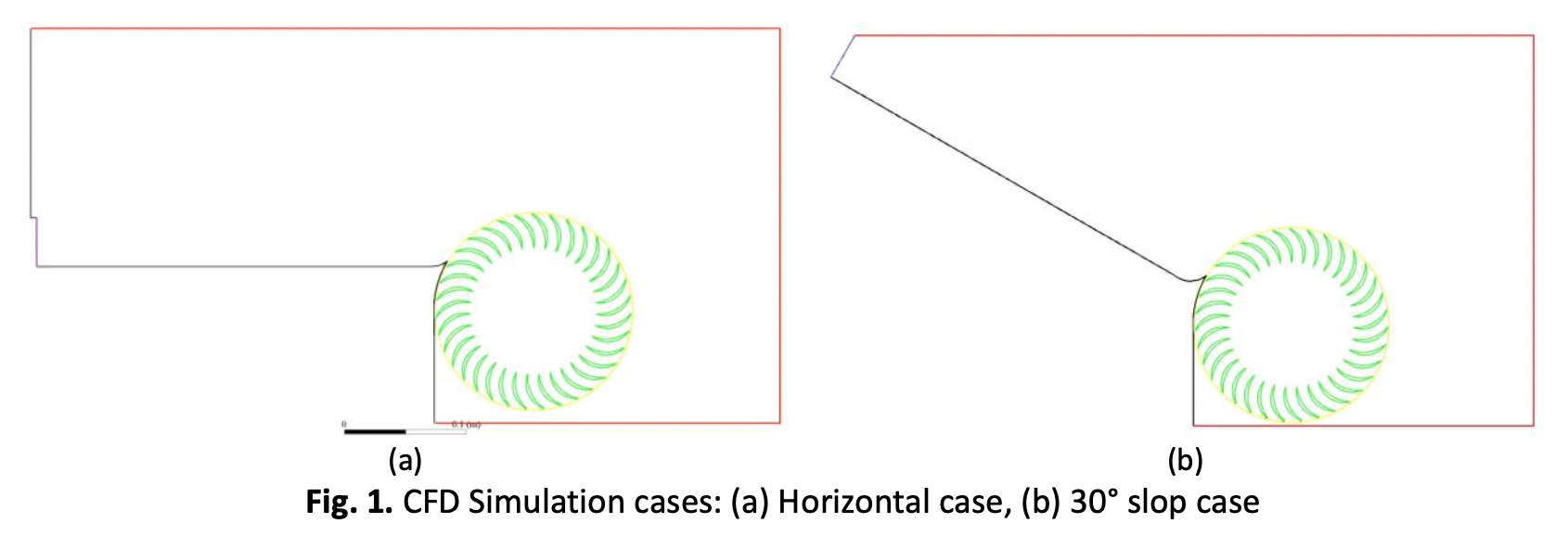Effect of Cross-Sectional Depth on Horizontal and 30° Slop Spillway Open Channel Pico Hydro Cross-Flow Turbine Efficiency
DOI:
https://doi.org/10.37934/arfmts.113.1.176187Keywords:
Open channel flow, spillway, pico hydro, turbine, cross-flow, depthAbstract
Harvesting the kinetic energy from the small dam’s spillway downstream flow in agricultural areas is interesting. On the other hand, a cross-flow turbine (CFT) is a unique impulse turbine because it works at a higher specific speed, which means this turbine works at a lower head and higher water flow rate. Thus, there is an opportunity to use a CFT to harvest the energy in the spillway. There are two possible scenarios: at the flat horizontal and the 30° slop flow. Several computational fluid dynamics (CFD) simulations were conducted to test the hypothesis. The simulations were performed with five variations of the ratio between the cross-sectional depth parameter of the spillway’s flow before approaching the turbine for each scenario. The total head in the present study case is 3.0 meters with 120 l/s of water discharge. The simulations used ANSYS® Fluent™ for 2D CFD simulation. The tests found that the CFT could attain 80.36% efficiency. Moreover, some water flows over the turbine at a higher rotational speed, leading to a significant loss in turbine performance, called potential loss. This finding indicates that the CFT could harvest the spillway’s flow kinetic energy when the flow is not too deep.
Downloads
































